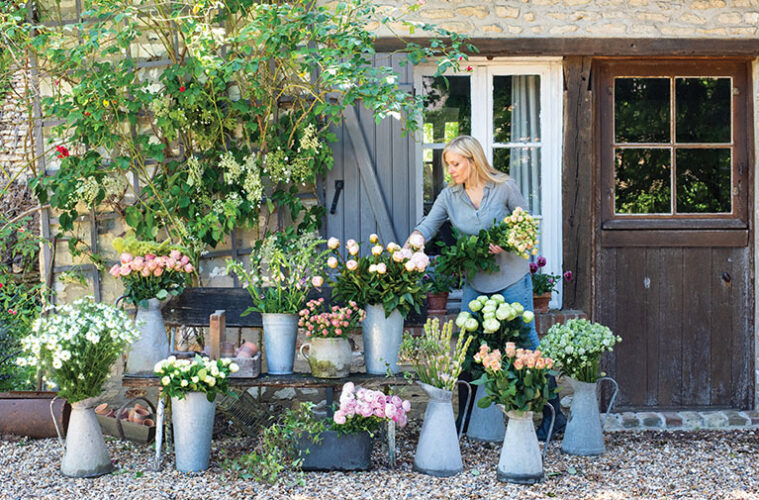When passions for France, flowers, and artistry converge, magic can happen. Such is the case with the creation of the newly released French Blooms: Floral Arrangements from Paris and Beyond (Rizzoli, 2023) by Sandra Sigman, owner of Les Fleurs, a French-inspired florist and home and garden store in Andover.
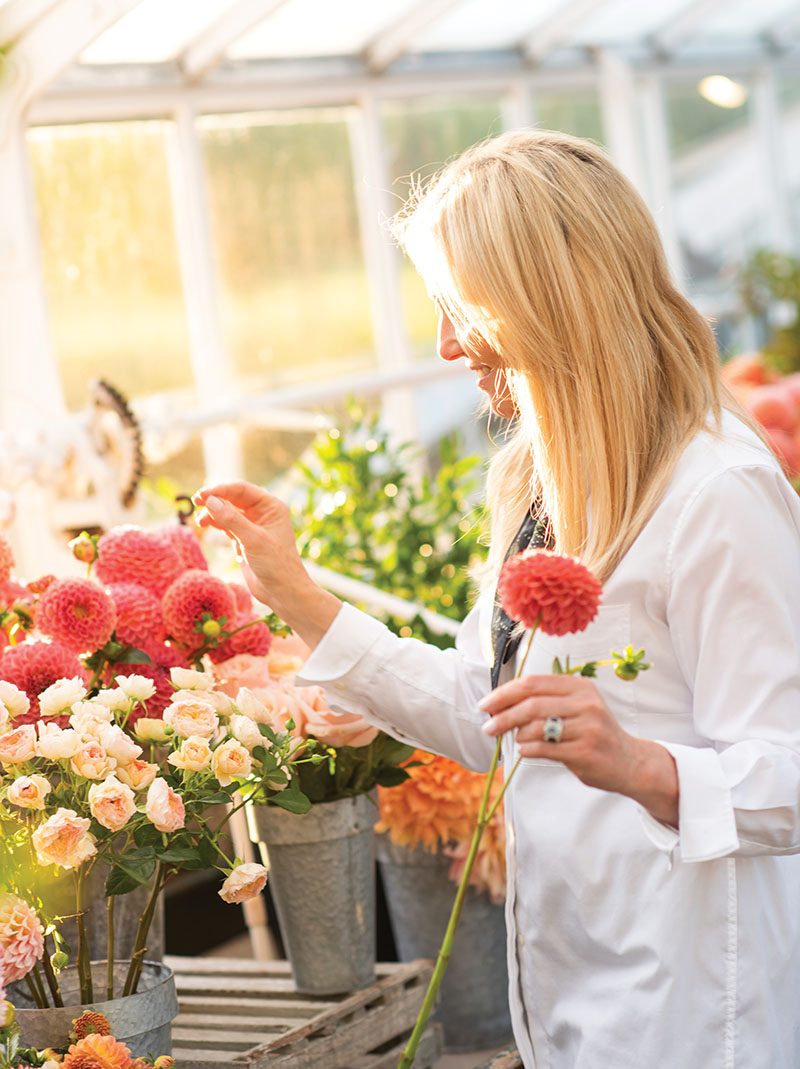
Photographer Kindra Clineff, who regularly worked with Sigman on stories for magazines (including Northshore), took most of the book’s photographs, beginning with the opening pages showcasing Paris in all its glory—its gardens, flower shops, antiques markets, boulevards, and quiet neighborhoods. There are images of Normandy and Provence, where Sigman cohosts biannual floral workshops, seasonal shots of New England, and lush renderings of 23 floral arrangements for readers to make.
As the book’s cowriter, I met Sigman when interviewing her for the 2021 BONS Wedding Awards. We soon realized we shared a love of flowers, figure skating, and Paris, where we both had lived. When Clineff and I realized she’d photographed many of my Northshore magazine stories, we knew bringing French Blooms to life as a threesome was kismet.
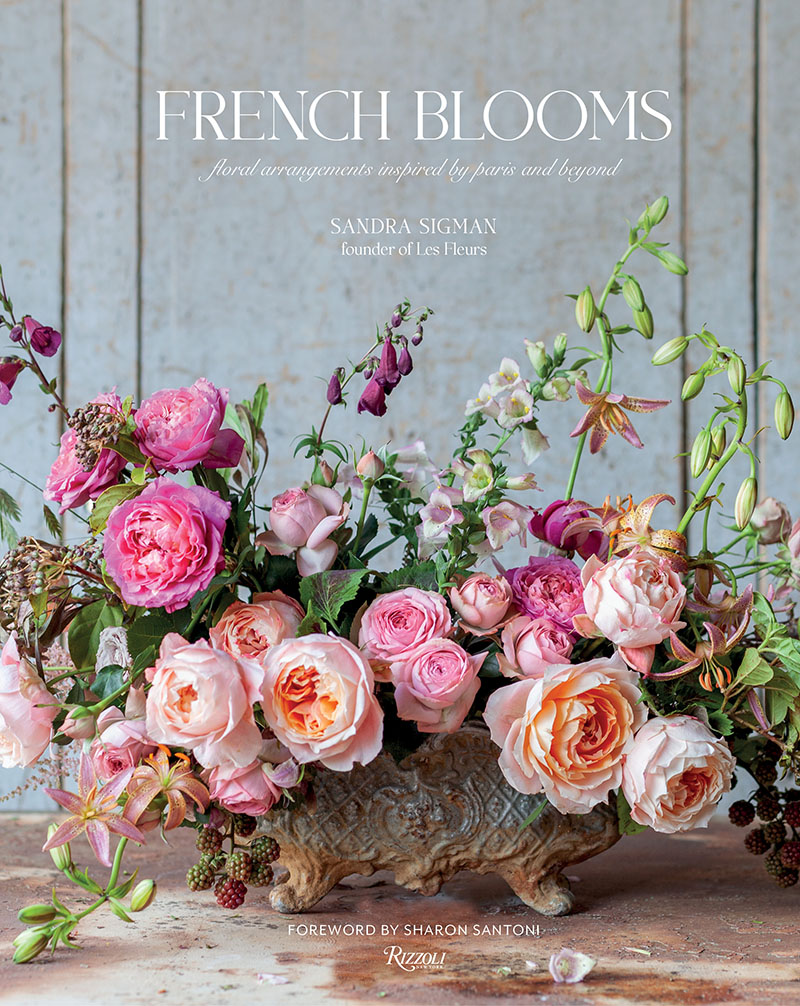
“My goal with this book is to share with readers the beauty of Paris, France, and flowers and then teach them the French way of designing florals,” says Sigman, whose arrangements have a distinctly romantic, elegant grace. Growing and arranging flowers runs in Sigman’s family. Her maternal grandmother was an avid gardener, as was her mom, who dried flowers from her garden to create bouquets. Over time, Sigman’s mother started using fresh flowers to craft seasonal arrangements, which she eventually began to sell. “When I was younger, I didn’t want to admit I loved working with flowers,” says Sigman, who often helped her mother on weekends. “But when I moved to Paris, I knew flowers were my calling.”
Sigman first went to Paris as a professional figure skater. She had skated since the age of five, training daily before and after school. When she won a coveted spot to perform with the European ice show, Holiday on Ice, she relocated to Paris, where the show was based. “I would get a café au lait near my apartment and then just spend the day wandering because I performed at night,” says Sigman, who loved everything about the city, from its golden bridges to outdoor cafés. “I’d visit little street markets and always buy a bouquet of flowers for my apartment. Then, I started visiting flower shops because my mother had a lot of questions about what they were like.”
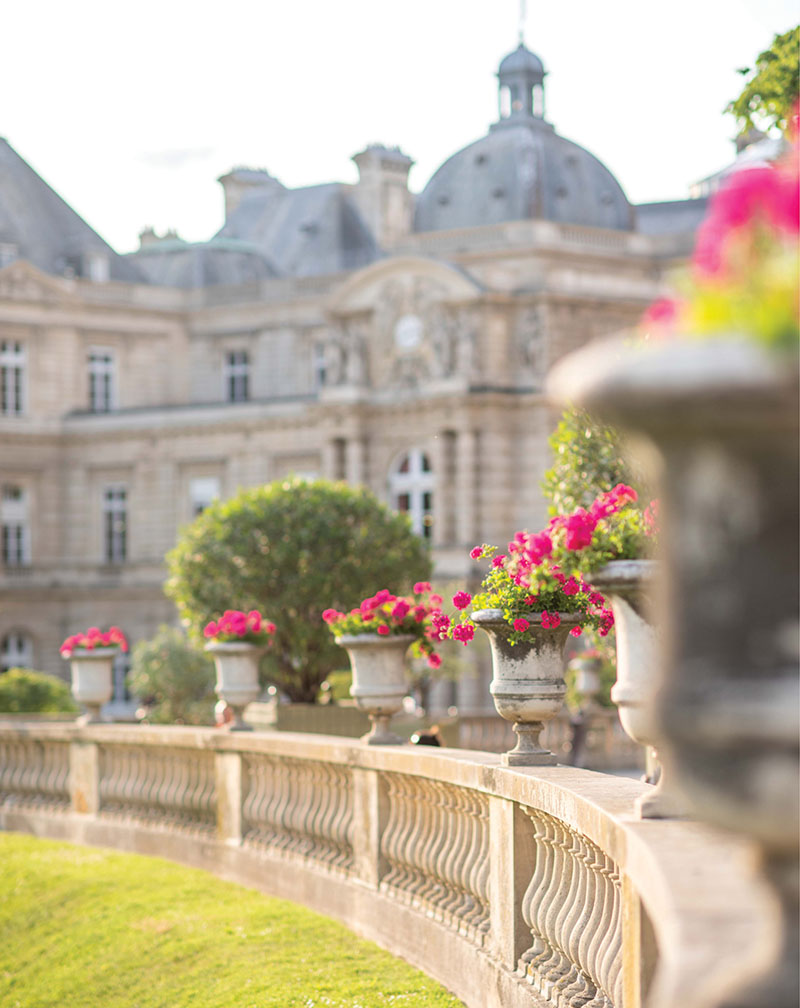
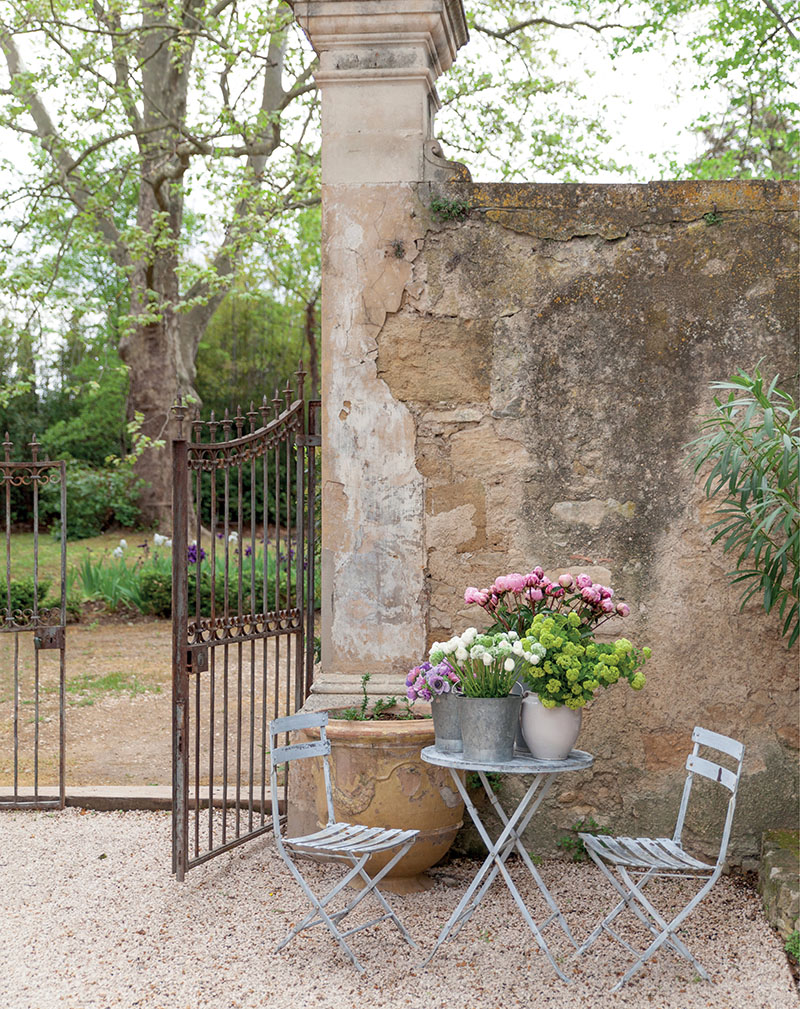
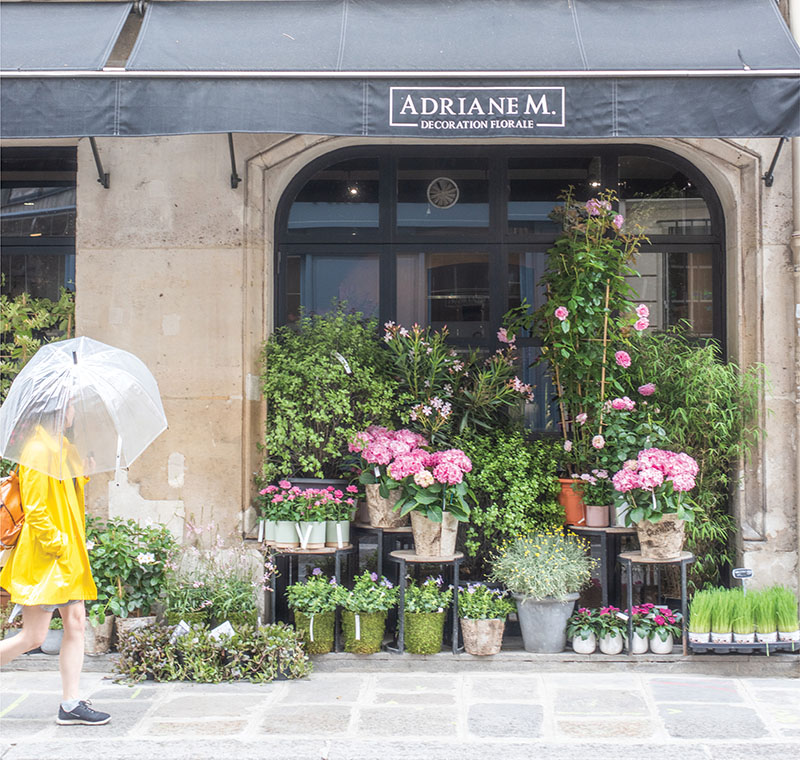
There was one flower shop at the bottom of Sigman’s street that she began to frequent. It was called Les Fleurs. “They had varieties of flowers I’d never seen, and they put them together in such a beautiful way,” she says. “The shop was so inviting, and I got to know the staff, who would let me sweep the floors and cut and condition the flowers when we got orders. I didn’t get paid but just loved being there, mainly because I missed home, missed flowers and missed my mom.”
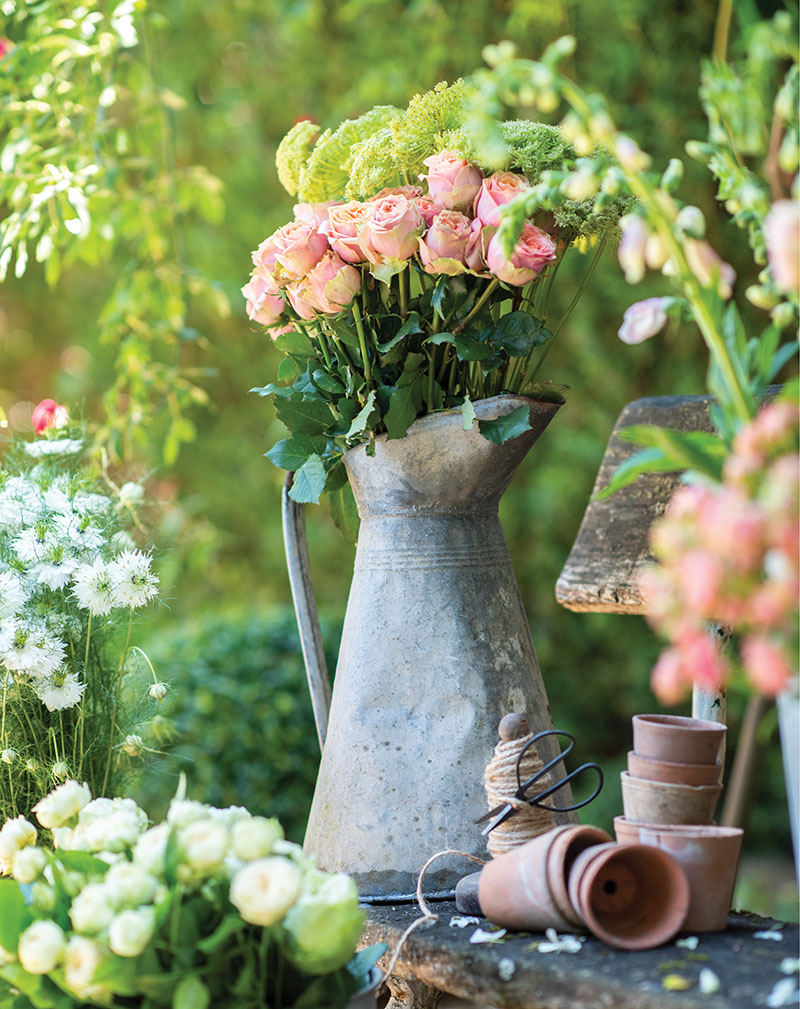
After nearly two years of living in Paris, Sigman returned to the States, inspired to open her own version of Les Fleurs, which she did in 1989. Drenched in light, the Andover store brims with plants, French antiques, and aromatic blooms displayed in tall glass holders at a flower bar, just like in Paris. To buy antiques for her store, Sigman regularly travels back to Paris. She visits flea markets on the city’s outskirts to scoop up vintage French crockery, cutlery, chandeliers, garden goods, and various containers to hold her floral arrangements. “I look for ironstone pieces, pitchers, watering cans, different cordial glasses and even tureens to use as vessels for flowers,” says Sigman, who devotes an entire chapter of French Blooms to containers. “Most folks want to put their money into the flowers. Yet, the container should be beautiful to elevate the arrangement.” The vase doesn’t have to be fancy or expensive, she adds, but it should have character.
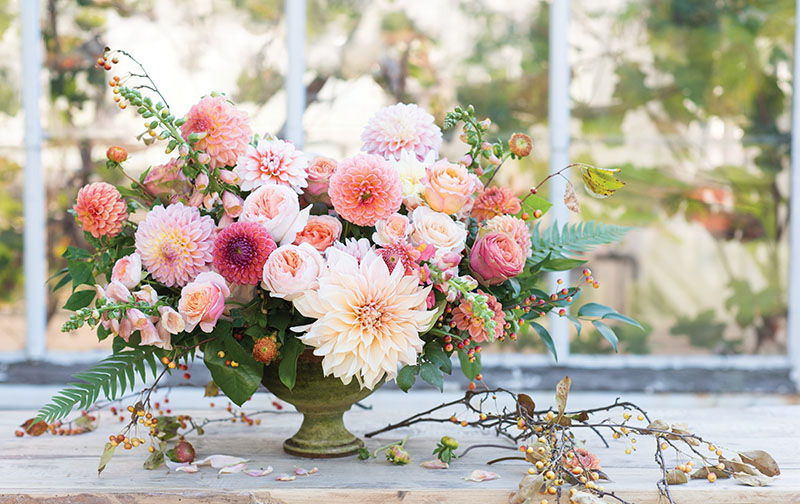
One of the book’s most important chapters outlines the French floral design principles that Sigman learned in Paris and employs in her floral work. One principle she shares is to use a limited color palette to create refined, chic arrangements. “The French tend to use mainly cool tones, like whites, blues, and purples, in spring and early summer and warm tones in the late summer and fall,” explains Sigman. “They don’t use half-warm and half-cool tones in a bouquet because they feel the rainbow of colors looks too harsh—like someone wearing too much makeup or jewelry.”
In the French Floral Recipes chapter, Sigman offers bouquets based on their location in the home. “When it comes to creating an arrangement, I think most people start with the space they want to fill. For example, if you’re having a dinner party, you want flowers for the dining table,” says Sigman. “If you’re hosting friends or family, you might want florals for the guestroom. For each of these spaces, I offer seasonal options, all with a nod to France.” And some arrangements she includes are purely French, such as the lily of the valley recipe she offers to celebrate the French holiday Fête du Muguet (also known as Premier Mai). Held on the first of May every year, it’s the day friends give each other bouquets of lily of the valley (muguet) for good luck.
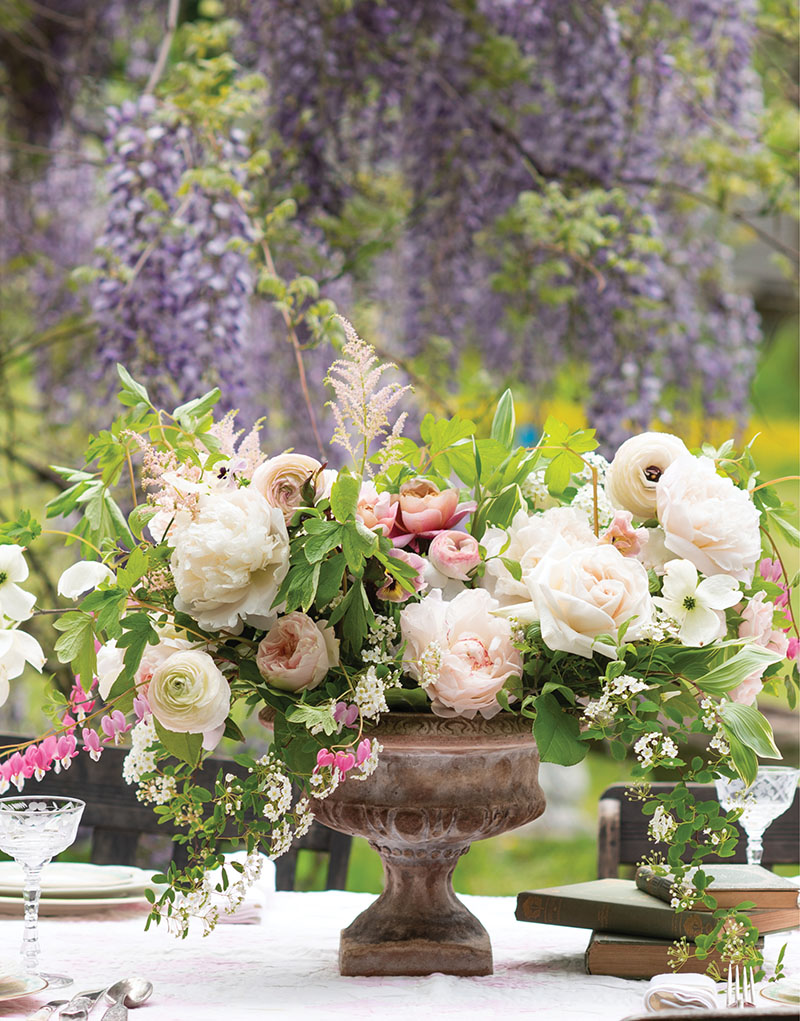
For those eager to grow their own blooms, Sigman explains how to create a French cutting garden. She uses her own New England garden as an example, sharing the types of flowers and greenery she grows and how she uses them in her arrangements.
“French style has had such a tremendous influence in my work and personal life,” says Sigman, who, with her husband, recently bought and renovated an apartment in Paris. “I fell in love with the city the first time I saw it—and fall in love with it again every time I visit. There is something about Paris and the French way of life that makes my heart sing—and I try to share that feeling through my store, my floral work, and now this book.”
To order a copy of Sandra Signman’s book French Blooms, visit rizzoliusa.com. For more information about Les Fleurs, visit lesfleurs.com.

